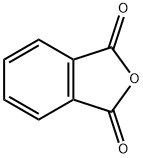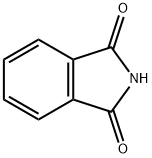Demosan
Synonym(s):2,5-Dichlorohydroquinone dimethyl ether
- CAS NO.:2675-77-6
- Empirical Formula: C8H8Cl2O2
- Molecular Weight: 207.05
- MDL number: MFCD00055445
- EINECS: 220-222-3
- SAFETY DATA SHEET (SDS)
- Update Date: 2023-05-15 10:43:24

What is Demosan?
Description
Chloroneb was developed by Du Pont de Nemours Co. in 1967. It differs from the compounds described above in that it does not contain nitro-groups. In common with other chlorobenzene fungicides, chloroneb has a low mammalian toxicity and a significant vapor pressure so that it was used as a soil fungicide in the culture of beans, cucumber, and cotton (20). In contrast with the nitrobenzene compounds, Phytophthora spp. are rather sensitive to chloroneb. Pythium spp. vary in sensitivity to chloroneb. Because of its low water solubility, chloroneb is only very weakly systemic (21,22).
Chemical properties
beige powder
Chemical properties
Colorless crystalline solid. Musty odor
The Uses of Demosan
Chloroneb-D6 is a labelled analogue of Chloroneb (C370935). Chloroneb is a fungicide that has selective activity against certain fungi (e.g. Mucor and Pythium fungi), and is most commonly used for cotton seedlings and bean plants.
Definition
ChEBI: A dimethoxybenzene that is p-dimethoxybenzene which is substituted by chlorines at positions 2 and 5. A fungicide formerly used as a seed treatment, it is not approved for use in the European Union.
General Description
White to tan solid or beige powder. Musty odor.
Air & Water Reactions
Insoluble in water.
Reactivity Profile
Demosan is stable at temperatures up to 514° F, in water in the presence of dilute acids or alkalis, and in the common organic solvents. Demosan is subject to microbial decomposition in soil under moist conditions.
Fire Hazard
Demosan is combustible.
Agricultural Uses
Fungicide: A systemic fungicide used to control snow mold on turf grass; used on cotton, sugar beets and bean seeds to control seedling disease. Not approved for use in EU countries. Registered for use in the U.S. except California
Trade name
CHLORAXYL® SEED TREATER; DELTA-COAT® II; DEMOSAN®; SOIL FUNGICIDE®-1823; TERSAN® SP; TERRANEB® SP; SOIL FUNGICIDE 1823®
Pharmacology
Chloroneb is not effective against Fusarium but has a relatively broad spectrum of activity compared with other compounds that are specifically active against oomycetes (24). By controlling Rhizoctonia solani, by seed-piece or in furrow applications, chloroneb increased potato yields in Texas (25).
Potential Exposure
An organochlorine/substituted benzene systemic fungicide used to control snow mold on turf grass; used on cotton, sugar beets and bean seeds to control seedling disease. Not approved for use in EU countries.
Shipping
UN2761 Organochlorine pesticides, solid, toxic, Hazard Class: 6.1; Labels: 6.1-Poisonous materials. UN3077 Environmentally hazardous substances, solid, n.o.s., Hazard class: 9; Labels: 9-Miscellaneous hazardous material, Technical Name Required.
Incompatibilities
May react with strong oxidizers such as chlorates, peroxides, nitrates, etc
Waste Disposal
Do not discharge into drains or sewers. Dispose of waste material as hazardous waste using a licensed disposal contractor to an approved landfill.Consult with environmental regulatory agencies for guidance on acceptable disposal practices. Incineration with effluent gas scrubbing is recommended. Containers must be disposed of properly by following package label directions or by contacting your local or federal environmental control agency, or by contacting your regional EPA office.
Properties of Demosan
| Melting point: | 133-135°C |
| Boiling point: | 268°C |
| Density | 1.3354 (rough estimate) |
| refractive index | 1.5537 (estimate) |
| Flash point: | >100 °C |
| storage temp. | Sealed in dry,Room Temperature |
| form | neat |
| Water Solubility | <0.01 g/100 mL at 23 ºC |
| BRN | 1952749 |
| Stability: | Stable. |
| CAS DataBase Reference | 2675-77-6(CAS DataBase Reference) |
| NIST Chemistry Reference | 1,4-Dichloro-2,5-dimethoxybenzene(2675-77-6) |
| EPA Substance Registry System | Chloroneb (2675-77-6) |
Safety information for Demosan
| Pictogram(s) |
 Environment GHS09 |
| GHS Hazard Statements |
H411:Hazardous to the aquatic environment, long-term hazard |
| Precautionary Statement Codes |
P273:Avoid release to the environment. |
Computed Descriptors for Demosan
New Products
4-AMINO-TETRAHYDRO-PYRAN-4-CARBOXYLIC ACID HCL 4-(Dimethylamino)tetrahydro-2H-pyran-4-carbonitrile 4-Aminotetrahydropyran-4-carbonitrile Hydrochloride (R)-3-Aminobutanenitrile Hydrochloride 3-((Dimethylamino)methyl)-5-methylhexan-2-one oxalate 1,4-Dioxa-8-azaspiro[4.5]decane 5-Bromo-2-nitropyridine Nimesulide BP Aceclofenac IP/BP/EP Diclofenac Sodium IP/BP/EP/USP Mefenamic Acid IP/BP/EP/USP Ornidazole IP Diclofenac Potassium THOMAIND PAPER PH 2.0 TO 4.5 1 BOX BUFFER CAPSULE PH 9.2 - 10 CAP SODIUM CHLORIDE 0.1N CVS ALLOXAN MONOHYDRATE 98% PLATINUM 0.5% ON 3 MM ALUMINA PELLETS (TYPE 73) LITHIUM AAS SOLUTION 2-Bromo-1-(bromomethyl)-3-chloro-5-nitrobenzene 2-Bromo-3-nitroaniline N-(3-Hydroxypropyl)-N-methylacetamide 3-Bromo-6-chloropyridazine 4-ethyl-3-nitrobenzoic acidRelated products of tetrahydrofuran








You may like
-
 Chloroneb 95% CAS 2675-77-6View Details
Chloroneb 95% CAS 2675-77-6View Details
2675-77-6 -
 Chloroneb CAS 2675-77-6View Details
Chloroneb CAS 2675-77-6View Details
2675-77-6 -
 1823368-42-8 98%View Details
1823368-42-8 98%View Details
1823368-42-8 -
 2-(3-(tert-butyl)phenoxy)-2-methylpropanoic acid 1307449-08-6 98%View Details
2-(3-(tert-butyl)phenoxy)-2-methylpropanoic acid 1307449-08-6 98%View Details
1307449-08-6 -
 Ethyl 3-(furan-2-yl)-3-hydroxypropanoate 25408-95-1 98%View Details
Ethyl 3-(furan-2-yl)-3-hydroxypropanoate 25408-95-1 98%View Details
25408-95-1 -
 2-Chloro-5-fluoro-1-methoxy-3-methylbenzene 98%View Details
2-Chloro-5-fluoro-1-methoxy-3-methylbenzene 98%View Details
1805639-70-6 -
 1784294-80-9 98%View Details
1784294-80-9 98%View Details
1784294-80-9 -
 Lithium ClavulanateView Details
Lithium ClavulanateView Details
61177-44-4